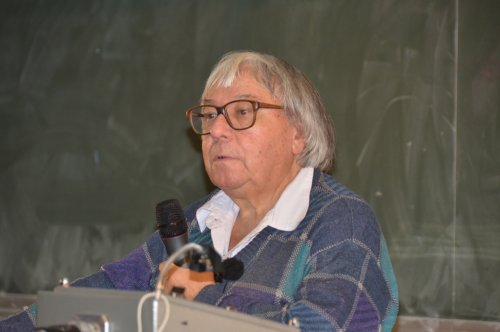 A Tribute to Michel Combes
A Tribute to Michel Combes
Michel Combes passed away on March 9, following a week of hospitalization. As a former Director of the Paris Observatory DESPA Laboratory (which later became LESIA) and a former President of Paris Observatory, Michel has played a major role in the life of the laboratory, the Observatory, and, beyond, in the development of planetology and of astronomical instrumentation in France and internationally.
As a former student of the Institut d’Optique in Paris, Michel entered the Observatory in the early 1960s. In 1969, Michel was a major actor in the establishment of a planetology group at the Observatory, first hosted within the Department of Solar Physics and later within the Space Research Department (DESPA).
Mainly interested in optics, Michel was convinced that new projects in astronomy require instrumental innovation. In 1973, he led a campaign in South Africa to observe the occultation of the star Beta Scorpio by Jupiter. This successful experiment made possible the retrieval of the thermal structure in the stratosphere of Jupiter. In parallel, Michel worked on the development of a Fourier Transform spectrometer operating in the thermal infrared, devoted to the spectral analysis of Jupiter. This instrument was flown on the Kuiper Airborne Observatory in 1973, and has been mounted several times on large ground-based telescopes.
In the 1980s, with Tobias Owen in the US and Vassili Moroz in Moscow, and in partnership with other laboratories, Michel developed the concept of a new instrument for analyzing the near-infrared emission of comets. This successful experiment, launched on the Soviet probes Vega 1 and Vega 2, has led to the first measurement of the temperature of a cometary nucleus, and the detection of several parent molecules outgassed from the nucleus.
In the mid-1980s, Michel became the Director of DESPA, and drove the laboratory toward participation in the ISOCAM camera of the Infrared Space Observatory (ISO) of ESA. In parallel, the planetology group got involved in space projects of planetary infrared sounding. This was the beginning of a series of infrared imaging spectrometers, conceived and developed at DESPA in partnership with Institut d’Astrophysique Spatiale in Orsay and several international laboratories. The first ones were devoted to the exploration of Mars, with ISM/PHOBOS and OMEGA/Mars-96 in partnership with Russia. These instruments inspired the imaging spectrometers of Cassini/Huygens, Rosetta and Venus Express.
In 1991, Michel became the President of Paris Observatory. This duty allowed him to express all his human and international relationship qualities, based on his excellent knowledge of men and institutions. As a President, Michel initiated a re-organization of the scientific departments of the Observatory. This was the first step of a global restructuration of the scientific departments, which was completed later in the early 2000. In the meantime, Michel continued to follow the development of infrared space projects at DESPA, in particular in the domain of stellar photometry and planetology. After the failure of the Mars-96 spacecraft just after launch, both experiments were rebuilt and used in other contexts, the French CoRoT mission and, under IAS’ PIship, the OMEGA instrument aboard Mars Express. Later, in collaboration with other international partners, the VIRTIS-H instrument was flown on two other European missions, Rosetta and Venus Express. He was also strongly involved in the NASA-ESA Cassini/Huygens mission through participation as co-investigator in DISR/Huygens and team member on VIMS/Cassini until recently.
In 1999, after two mandates, Michel came back to DESPA, which later transformed into LESIA, and became involved in teaching activities regarding optics, and in the development of instrumental concepts. He also became more and more involved in outreach activities within the Service of Communication of the Observatory, as well as within the team working on History of Sciences.
Thanks to his strong personality, his acute sense of politics, his engagement toward society, his sense of organization and dialog, Michel Combes has played a major role in the field of planetology but also at the level of the Observatory and beyond. Michel was a leader with a strong sense of responsibility, respectful of his international collaborators. He had a very strong capability for bringing teams together – scientists, engineers, technicians, administrative employees – and to make them work together towards a common objective. He will be deeply missed by his friends and colleagues.
Therese Encrenaz and Pierre Drossart


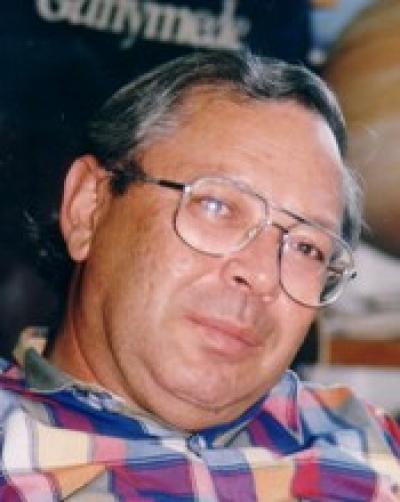
 Mark Allen, 67, died on October 22 of complications from ALS (Lou Gehrig’s Disease). Mark was born in New York City on September 29, 1949, graduated Summa Cum Laude and Phi Beta Kappa from Columbia College of Columbia University in New York City and received his PhD from Caltech, both in chemistry. He spent nearly all of his 37-year career at Caltech and JPL, where he was a principal scientist, developing chemical models to study the atmospheres of the earth, planets, comets, interstellar space, and exoplanets. Working with his then postdoctoral advisor Prof. Yuk Yung of Caltech, Mark was the principal architect, builder, and keeper of the comprehensive chemical code KINETICS which has become of the best-known models for simulating chemical processes in planetary atmospheres. Mark was a team member of the NASA Astrobiology Institute (NAI) Virtual Planet Lab, Principal Investigator for the “Titan as a Prebiotic System” node of the NAI, and was involved in a number of NASA and ESA missions and mission concepts. He is survived by his wife of 34 years, Emily Bergman; children Boh Allen, Philip Allen, and daughter-in-law, Andrea Allen; mother Lucille Allen; and sister, Barbara Peterson. His research continues in the work of his colleagues and former graduate students and postdocs. Donations in his memory may be made to Columbia College at Columbia University, or the California Institute of Technology.
Mark Allen, 67, died on October 22 of complications from ALS (Lou Gehrig’s Disease). Mark was born in New York City on September 29, 1949, graduated Summa Cum Laude and Phi Beta Kappa from Columbia College of Columbia University in New York City and received his PhD from Caltech, both in chemistry. He spent nearly all of his 37-year career at Caltech and JPL, where he was a principal scientist, developing chemical models to study the atmospheres of the earth, planets, comets, interstellar space, and exoplanets. Working with his then postdoctoral advisor Prof. Yuk Yung of Caltech, Mark was the principal architect, builder, and keeper of the comprehensive chemical code KINETICS which has become of the best-known models for simulating chemical processes in planetary atmospheres. Mark was a team member of the NASA Astrobiology Institute (NAI) Virtual Planet Lab, Principal Investigator for the “Titan as a Prebiotic System” node of the NAI, and was involved in a number of NASA and ESA missions and mission concepts. He is survived by his wife of 34 years, Emily Bergman; children Boh Allen, Philip Allen, and daughter-in-law, Andrea Allen; mother Lucille Allen; and sister, Barbara Peterson. His research continues in the work of his colleagues and former graduate students and postdocs. Donations in his memory may be made to Columbia College at Columbia University, or the California Institute of Technology.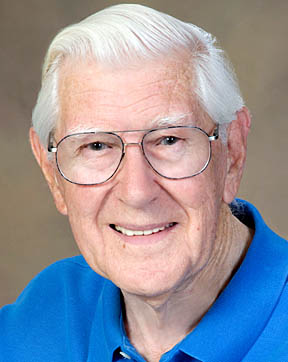 Ewen was a British-born astronomer specializing in lunar studies since 1951. During WWII he was part of the secret PLUTO project (Pipe Line Under The Ocean) to supply Allied vehicles in France with gasoline after the Normandy invasion. After meeting Gerard Kuiper at an IAU meeting in Dubline in 1955, he was invited to join the Lunar Project at Yerkes to produce a high-quality photographic atlas of the moon, and subsequently moved with Kuiper to Tucson, Arizona, where this project ultimately resulted in the establishment of the Lunar and Planetary Laboratory. He provided valuable input into the planning and operations of Apollo operations on the Moon. Ewen was much beloved by his colleagues and is remembered for his knowledge, friendliness and charm.
Ewen was a British-born astronomer specializing in lunar studies since 1951. During WWII he was part of the secret PLUTO project (Pipe Line Under The Ocean) to supply Allied vehicles in France with gasoline after the Normandy invasion. After meeting Gerard Kuiper at an IAU meeting in Dubline in 1955, he was invited to join the Lunar Project at Yerkes to produce a high-quality photographic atlas of the moon, and subsequently moved with Kuiper to Tucson, Arizona, where this project ultimately resulted in the establishment of the Lunar and Planetary Laboratory. He provided valuable input into the planning and operations of Apollo operations on the Moon. Ewen was much beloved by his colleagues and is remembered for his knowledge, friendliness and charm.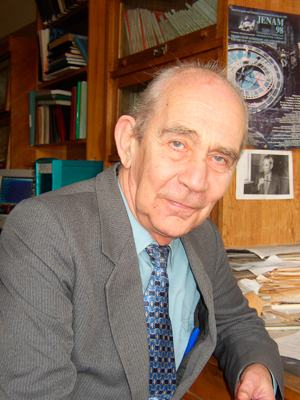 The Ukrainian scientific community is very sad to announce the passing of Professor Edgard G. Yanovitskij on 23 June 2016. Dr. Yanovitskij spent his entire professional life as a leading researcher at the Main Astronomical Observatory of the Ukrainian National Academy of Sciences in Kyiv. As a prominent member of the famous Soviet school of radiative transfer founded by Academicians Viktor Ambartsumian and Viktor Sobolev, he had devoted most of his exemplary career to the study of radiative energy transport in planetary atmospheres and analyses of spectrophotometric observations of planets. His most profound accomplishments include the general analysis of principles of invariance, the analytical theory of radiative transfer in vertically inhomogeneous atmospheres, and the development of extremely efficient and numerically accurate computer solvers of the radiative transfer equation. His seminal contributions were summarized in the monograph on “Light Scattering in Inhomogeneous Atmospheres” published by Springer. For many years, Dr. Yanovitskij served as an Editorial Board Member for the “Journal of Quantitative Spectroscopy and Radiative Transfer” and “Kinematics and Physics of Celestial Bodies.” His research accomplishments were celebrated by numerous professional awards, including the National Prize of Ukraine in Science and Technology. The relatives, colleagues, and friends of Professor Edgard Yanovitsky will always remember him as an outstanding scientist and an exceptional human being.
The Ukrainian scientific community is very sad to announce the passing of Professor Edgard G. Yanovitskij on 23 June 2016. Dr. Yanovitskij spent his entire professional life as a leading researcher at the Main Astronomical Observatory of the Ukrainian National Academy of Sciences in Kyiv. As a prominent member of the famous Soviet school of radiative transfer founded by Academicians Viktor Ambartsumian and Viktor Sobolev, he had devoted most of his exemplary career to the study of radiative energy transport in planetary atmospheres and analyses of spectrophotometric observations of planets. His most profound accomplishments include the general analysis of principles of invariance, the analytical theory of radiative transfer in vertically inhomogeneous atmospheres, and the development of extremely efficient and numerically accurate computer solvers of the radiative transfer equation. His seminal contributions were summarized in the monograph on “Light Scattering in Inhomogeneous Atmospheres” published by Springer. For many years, Dr. Yanovitskij served as an Editorial Board Member for the “Journal of Quantitative Spectroscopy and Radiative Transfer” and “Kinematics and Physics of Celestial Bodies.” His research accomplishments were celebrated by numerous professional awards, including the National Prize of Ukraine in Science and Technology. The relatives, colleagues, and friends of Professor Edgard Yanovitsky will always remember him as an outstanding scientist and an exceptional human being.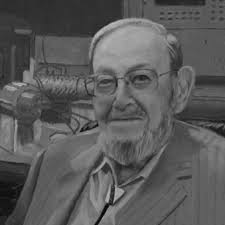 Gerald J. Wasserburg was an American geologist. At the time of his death, he was the John D. MacArthur Professor of Geology and Geophysics, Emeritus, at the California Institute of Technology. He was best known for his work in the fields of isotope geochemistry, cosmochemistry, meteoritics, and astrophysics.
Gerald J. Wasserburg was an American geologist. At the time of his death, he was the John D. MacArthur Professor of Geology and Geophysics, Emeritus, at the California Institute of Technology. He was best known for his work in the fields of isotope geochemistry, cosmochemistry, meteoritics, and astrophysics.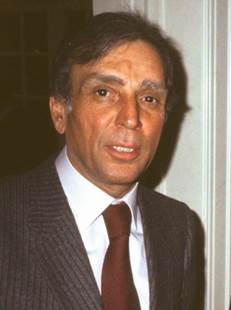 S. Ichtiaque Rasool passed away peacefully on April 20, 2016. Born in 1930 in Lucknow, India, Ichtiaque moved to France where he earned his doctorate in atmospheric sciences in 1956 at the University of Paris and met his wife of 51 years, Francoise. He came to United States in 1961 at the invitation of Robert Jastrow of the Goddard Institute of Space Science and began what turned out to be an amazing 45 year career with NASA eventually retiring from the position of Chief Scientist for Global Change. In 1968, Ichtiaque spent a sabbatical year in Paris, during which he gave lectures that were instrumental in the formation of a planetology group at the Paris Observatory and attracted Catherine de Bergh, Thérèse Encrenaz, and Daniel Gautier to pursue careers in planetary science. While at GISS, he was appointed an editor of the Journal of The Atmospheric Sciences and actively solicited papers on planetary atmospheres. Ichtiaque became a US citizen in 1970 and in 1971 he moved to NASA Headquarters as the Deputy Director for Planetary Programs under Director Robert S. Kraemer when the Grand Tour Mission was under consideration and cancelled and resurrected as Voyager 1 (Mariner Jupiter Saturn) and 2 (Mariner Jupiter Uranus Neptune). During this period there was also the launch and landing of Viking Spacecrafts on Mars. Later Ichtiaque served as Noel Hinner’s Deputy for Science before moving over to the Earth Science side of NASA. After joining GISS he collaborated with Arv Kliore on Mariner radio occultation measurements of the atmospheres/ionospheres of Mars and Venus. With Catherine de Bergh he wrote one of the early papers about the runaway greenhouse on Venus and with Stephen Schneider he raised the issue about the combined effects of large increases in CO2 and aerosols in a Science publication. He was the recipient of the NASA Medal for Exceptional Scientific Achievement in 1974, the William T. Pecora Award in 2002, and the COSPAR William Nordberg Medal in 1988. Throughout his career he was a strong advocate for international cooperation in Earth and planetary sciences, even during waning years of the cold war. Ichtiaque is survived by his wife, his son, Immanuel Rasool, his daughter, Elisa Petit, and four grandchildren. For those who would like to know more about his unique career, his book entitled “My Life: From Riches to Rags and (almost) back! A Memoire” is recommended and available from
S. Ichtiaque Rasool passed away peacefully on April 20, 2016. Born in 1930 in Lucknow, India, Ichtiaque moved to France where he earned his doctorate in atmospheric sciences in 1956 at the University of Paris and met his wife of 51 years, Francoise. He came to United States in 1961 at the invitation of Robert Jastrow of the Goddard Institute of Space Science and began what turned out to be an amazing 45 year career with NASA eventually retiring from the position of Chief Scientist for Global Change. In 1968, Ichtiaque spent a sabbatical year in Paris, during which he gave lectures that were instrumental in the formation of a planetology group at the Paris Observatory and attracted Catherine de Bergh, Thérèse Encrenaz, and Daniel Gautier to pursue careers in planetary science. While at GISS, he was appointed an editor of the Journal of The Atmospheric Sciences and actively solicited papers on planetary atmospheres. Ichtiaque became a US citizen in 1970 and in 1971 he moved to NASA Headquarters as the Deputy Director for Planetary Programs under Director Robert S. Kraemer when the Grand Tour Mission was under consideration and cancelled and resurrected as Voyager 1 (Mariner Jupiter Saturn) and 2 (Mariner Jupiter Uranus Neptune). During this period there was also the launch and landing of Viking Spacecrafts on Mars. Later Ichtiaque served as Noel Hinner’s Deputy for Science before moving over to the Earth Science side of NASA. After joining GISS he collaborated with Arv Kliore on Mariner radio occultation measurements of the atmospheres/ionospheres of Mars and Venus. With Catherine de Bergh he wrote one of the early papers about the runaway greenhouse on Venus and with Stephen Schneider he raised the issue about the combined effects of large increases in CO2 and aerosols in a Science publication. He was the recipient of the NASA Medal for Exceptional Scientific Achievement in 1974, the William T. Pecora Award in 2002, and the COSPAR William Nordberg Medal in 1988. Throughout his career he was a strong advocate for international cooperation in Earth and planetary sciences, even during waning years of the cold war. Ichtiaque is survived by his wife, his son, Immanuel Rasool, his daughter, Elisa Petit, and four grandchildren. For those who would like to know more about his unique career, his book entitled “My Life: From Riches to Rags and (almost) back! A Memoire” is recommended and available from 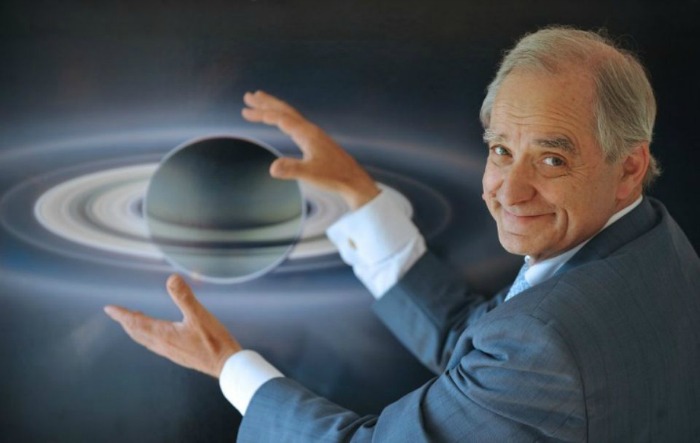 The planetary community, and in particular his French colleagues and friends, are very sad to announce the passing of André Brahic. Professor at the University Paris-Diderot, based at the Observatory of Paris until 1995 and the AIM laboratory at CEA Saclay, André Brahic devoted most of his career to the study of solar system bodies, in particular of planetary rings and the formation of planets, but started out by working on the chaos theory, the dynamics of galaxies and the supernovas. He was a member of the scientific teams of the cameras on Voyager 1 and 2, through which he made many discoveries and notably confirmed the existence of Neptune rings and the arcs of the Adams ring, that he had predicted. With an international team, he showed that the Adams ring, is actually composed of four arcs that he and his collaborators baptized “Courage”, “Liberté”, “Egalité”, “Fraternité” (CLEF for “KEY” in French). He was also a member of the science team on the Cassini mission, still returning amazing science results from the Saturnian system, that André would have liked to follow until the mission’s end. André Brahic was of course also an extraordinary communicator, who transmitted his passion for science and astrophysics to generations of students and to the public. This has probably incited many of today astronomers career choices, as it was for me – André was my professor during the Master degree. He knew how to communicate his enthusiasm for science to everyone, whatever their level of education. André Brahic received the DPS Carl Sagan Medal in 2001 and the Jean Perrin 2006 award for scientific popularization. In July 2015, he received the insignia of Chevalier de la Legion d’Honneur in France. André Brahic has left an impressive heritage and will always be remembered as a great scientist, a great teacher and a great advocate of communicating with the public.
The planetary community, and in particular his French colleagues and friends, are very sad to announce the passing of André Brahic. Professor at the University Paris-Diderot, based at the Observatory of Paris until 1995 and the AIM laboratory at CEA Saclay, André Brahic devoted most of his career to the study of solar system bodies, in particular of planetary rings and the formation of planets, but started out by working on the chaos theory, the dynamics of galaxies and the supernovas. He was a member of the scientific teams of the cameras on Voyager 1 and 2, through which he made many discoveries and notably confirmed the existence of Neptune rings and the arcs of the Adams ring, that he had predicted. With an international team, he showed that the Adams ring, is actually composed of four arcs that he and his collaborators baptized “Courage”, “Liberté”, “Egalité”, “Fraternité” (CLEF for “KEY” in French). He was also a member of the science team on the Cassini mission, still returning amazing science results from the Saturnian system, that André would have liked to follow until the mission’s end. André Brahic was of course also an extraordinary communicator, who transmitted his passion for science and astrophysics to generations of students and to the public. This has probably incited many of today astronomers career choices, as it was for me – André was my professor during the Master degree. He knew how to communicate his enthusiasm for science to everyone, whatever their level of education. André Brahic received the DPS Carl Sagan Medal in 2001 and the Jean Perrin 2006 award for scientific popularization. In July 2015, he received the insignia of Chevalier de la Legion d’Honneur in France. André Brahic has left an impressive heritage and will always be remembered as a great scientist, a great teacher and a great advocate of communicating with the public.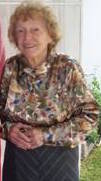 On February 11, just four days short of her 101st birthday, Mildred Shapley Matthews passed away peacefully at her home in California with her family present. Mildred was the daughter of Harvard College Observatory Director Harlow Shapley and she held the interesting distinction of being “lost in the solar system” for 75 years. As a commemoration of his newborn daughter, Shapley bestowed the name Mildred to asteroid 878 discovered in 1916. Unfortunately the initial observations of the asteroid were limited, and the object was “lost” with highly uncertain orbital elements until recovered in 1991. Friends and colleagues seeing Mildred over the years would always ask, “are you found yet?” Matthews’ foundational contributions to planetary science began around the time of her nominal retirement age, when in the 1970s she began working as the production editor in the inaugural years of the Space Science Series created by Tom Gehrels. Her role became most prominently recognized as co-editor on more than a dozen volumes extending in to the 1990s. Overall for more than 20 Space Science Series volumes she edited, operating through friendly (then increasingly stern, but always polite) post cards and phone calls to delinquent authors, it was Matthews who brought the books into their final published form. Matthews leaves behind a legacy of books that have served as the gateway for countless planetary science careers and insights toward future advancements in our field. In 1993, Matthews received the DPS’ Harold Masursky Award for Meritorious Service to Planetary Science.
On February 11, just four days short of her 101st birthday, Mildred Shapley Matthews passed away peacefully at her home in California with her family present. Mildred was the daughter of Harvard College Observatory Director Harlow Shapley and she held the interesting distinction of being “lost in the solar system” for 75 years. As a commemoration of his newborn daughter, Shapley bestowed the name Mildred to asteroid 878 discovered in 1916. Unfortunately the initial observations of the asteroid were limited, and the object was “lost” with highly uncertain orbital elements until recovered in 1991. Friends and colleagues seeing Mildred over the years would always ask, “are you found yet?” Matthews’ foundational contributions to planetary science began around the time of her nominal retirement age, when in the 1970s she began working as the production editor in the inaugural years of the Space Science Series created by Tom Gehrels. Her role became most prominently recognized as co-editor on more than a dozen volumes extending in to the 1990s. Overall for more than 20 Space Science Series volumes she edited, operating through friendly (then increasingly stern, but always polite) post cards and phone calls to delinquent authors, it was Matthews who brought the books into their final published form. Matthews leaves behind a legacy of books that have served as the gateway for countless planetary science careers and insights toward future advancements in our field. In 1993, Matthews received the DPS’ Harold Masursky Award for Meritorious Service to Planetary Science.